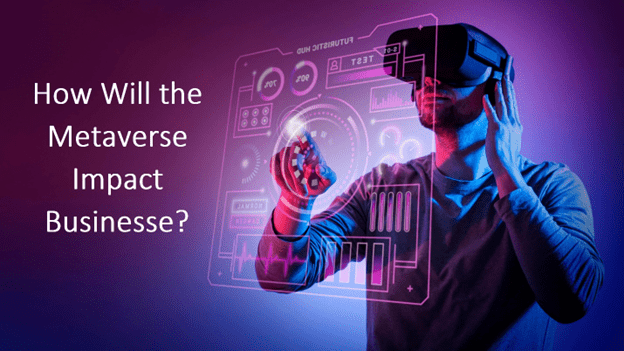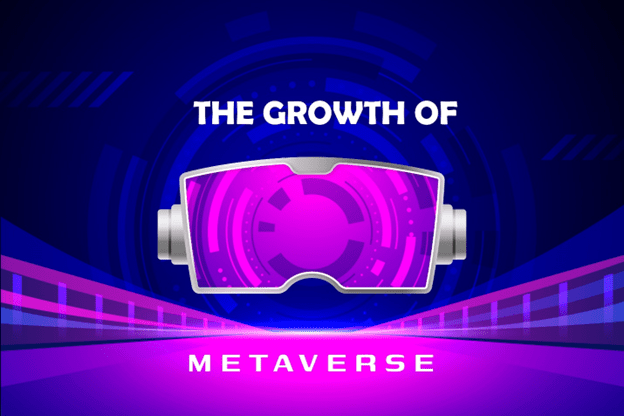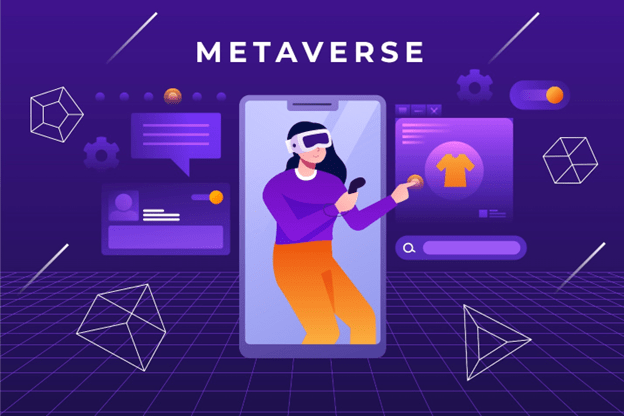While some of us are still coming to terms with the fact that we’ll be spending more time in a 3D version of the internet, businesses are already rushing to define the space, carve out their niche, and even buy virtual real estate.
According to 71% of respondents in a company survey, the shift to the Metaverse will have a positive business impact, and 42% believe it will be a “breakthrough” or “transformational.” (Stat source: weforum)
The above stat clears that digital technologies would move to the next stage of advancement—the Metaverse.
However, there are still questions in front of many businesses like; What effects will Metaverse have on companies? How can we shape the change to our advantage and get ahead of it?
Metaverse Defined
There is much debate about the definition of the Metaverse, but taking a practical approach and focusing on the productive use cases it enables is more beneficial. The Metaverse is created with the convergence of technologies, data proliferation, and content, all of which work together to provide user value. For example, a virtual reality (VR) gaming platform may benefit consumers. In contrast, businesses may benefit from a machine-learning algorithm incorporating multiple diverse data sets to provide better insights and improve decision-making.
Transients:
The Metaverse is the fusion of the real and virtual worlds. As a result, people from all over the world can gather to have real-time experiences and interactions by utilizing virtual and augmented realities and the peripherals that allow people to connect to them, such as virtual headsets, augmented reality apps, wearables, and so on.
In many ways, none of this is fiction. Avatar-populated virtual worlds have existed for some time.
However, as technology has advanced, these have grown in importance outside of the realms of gaming. Metaverse is about places where people can create, sell, and own virtual objects, including virtual real estate, using non-fungible tokens. Virtual-world brands can conduct real-world transactions.
The Growth Of Metaverse
The Metaverse is present in our daily lives today. Moreover, the Metaverse is becoming a part of everyday life and business and a driver of significant value as a fully functioning economy.
The strength of technology is only as muscular as its weakest link. The Metaverse is rapidly evolving as the technologies converge to improve it.
Consumers seeking more diverse experiences moved from play-to-win games to play-to-earn “gameability” in the first phase, resulting in an explosion in engagement. Hundreds of millions of people use gaming platforms. Many online gaming applications now have a steady stream of users who “work” in the Metaverse and earn a living.
As AR and VR devices spread and game engines and computing power evolved, deeper immersion was possible as users applied the layers of the Metaverse to multiple aspects of their lives and businesses.
In the third phase, which is currently underway, a more extensive ecosystem is emerging due to constantly expanding and faster connections. It is witnessing monetization via crypto ecosystems, which include the birth and rapid growth of cryptocurrencies, economic systems, and virtual assets. Even as cryptocurrencies experience turbulence, these instruments—can still be owned, bought, and sold. In addition, a virtual bridge between reality and the real world encourages using the Metaverse for many purposes, such as work and health care.
Related: What is Metaverse? All You Need To Know
The Impact Of Metaverse On Online Business
Using the Metaverse as a digital representation of the physical world, like a technology stack, we can see how companies will participate at different layers. Some will work in the lower layers, constructing digital infrastructure, providing financing, and providing connectivity or critical services. On the other hand, most will concentrate on the top app layer, where they will interact with users (B2B or B2C) in Metaverse environments.
Most of the action has been in B2C, particularly gaming and, increasingly, providing immersive virtual experiences such as concerts. However, B2B applications are catching up quickly and may eventually be where the majority of business value is generated.
Retail, fashion, and apparel companies were among the first to enter the Metaverse. Still, many major companies in the technology, telecommunications, health care, and automotive industries, among others, have become involved. The figures add up quickly.
There are numerous reasons why nontech companies should pay attention.
A Metaverse can also help organizations that want better employee experiences, particularly those with a distributed workforce. The financial and environmental costs of physically gathering people for meetings or training can be avoided with Metaverse. However, they can still interact and have downtime together in the Metaverse more daily and meaningfully than through Teams or Zooms.
A Metaverse can also be used to a significant advantage in creating virtual twins. Indeed, some businesses are already using this technology to test new products and operations.
Companies interested in participating must first understand how their strategy and sustainable advantage may need to change as the competition evolves. They should assess their Metaverse assets and capabilities with the following aspects:
- How their current value propositions will evolve?
- How will they defend and monetize Metaverse assets in the future?
Companies must deal with issues like protecting their customers’ digital identities in the Metaverse, providing linkages across data layers to improve connectivity services, and developing winning Metaverse solutions for specific industry-vertical use cases.
From a technological standpoint, winning in the Metaverse will be determined by three factors for both B2C and B2B companies:
- Most importantly, owning—or otherwise ensuring ready access to and control over—data, content, and the surrounding “geography” on the Metaverse app layer.
- To create strong connections between digital layers and the physical and virtual worlds (human-machine interface), including IoT sensors to enable human-to-Metaverse connectivity and blockchain technology to create authentic and unalterable ledgers for trust purposes.
- Giving consumers and businesses the tools they need to spend more time in the Metaverse, such as computing power, low latency to ensure timely access to information; AI to provide continuous learning, fault tolerance, and enhanced contextualization; and privacy and permissions to ensure proper controls.
Conclusion
The Metaverse represents a vast opportunity beyond avatars, gaming, augmented and virtual reality, and consumer applications. Devices provide the window, but success will necessitate a thorough understanding of the intersection of business strategy, traditional and virtual digital assets, and the new tools and assets of a Web3-enabled environment. The time has come to begin gaining that understanding.
The large number of young people flocking to the Metaverse to shop and attend events demonstrates its growing popularity. This opens up a new channel for online businesses targeting this age group that could be more profitable than social media. On the other hand, the Metaverse provides a plethora of opportunities for all organizations.










